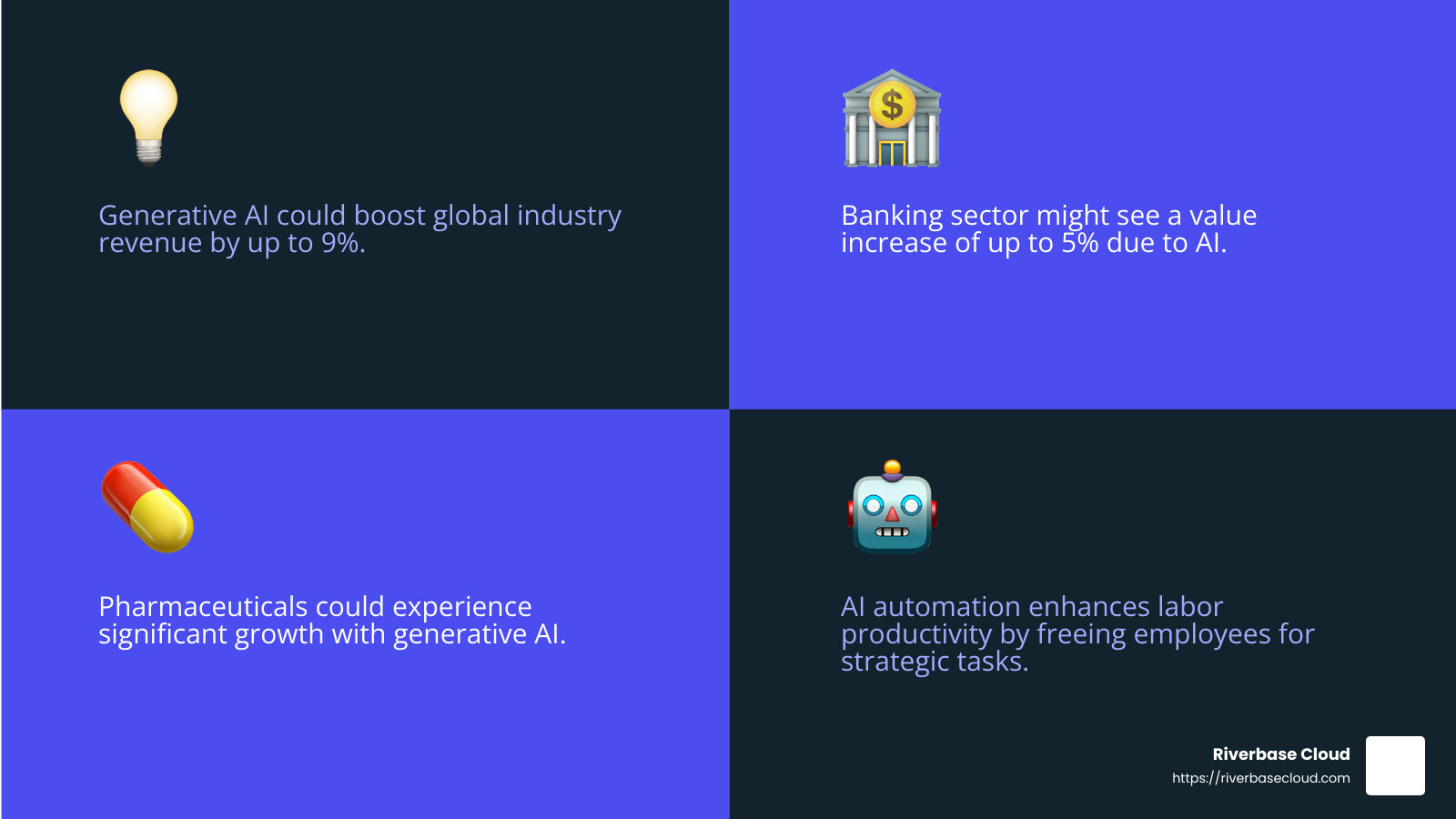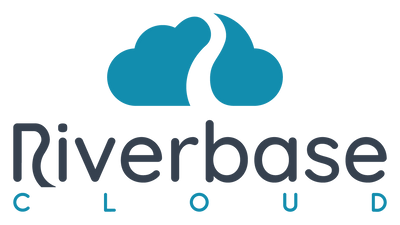AI-driven business growth is changing how small to medium-sized businesses compete in the modern market. With the power of generative AI, companies can improve productivity, streamline marketing strategies, and ultimately boost revenue. Here’s how AI is impacting business growth:
- Automation: AI automates routine tasks, saving time and reducing errors.
- Data Insights: Advanced analytics help businesses make smarter decisions.
- Personalized Marketing: Custom campaigns increase customer engagement.
- Risk Management: AI detects and prevents fraud effectively.
AI is no longer just a buzzword—it's a vital tool for achieving business growth. The accessibility of AI tools enables businesses to optimize operations and improve customer experiences at an unprecedented speed.
My name is Gary Gilkison, and I specialize in AI-driven business growth. With a background in IT leadership, business development, and digital marketing, I guide businesses to harness AI for sustainable expansion. As we explore further, we’ll see how AI continues to redefine opportunities across industries.

The Economic Potential of AI
AI's economic potential is vast, especially when considering the role of generative AI. This technology is reshaping industries by boosting productivity and driving innovation. According to a McKinsey report, generative AI could add up to 9% to global industry revenue, particularly benefiting tech companies. Industries like banking and pharmaceuticals might see up to a 5% increase in value.

Boosting Labor Productivity
Labor productivity is a key area where AI is making a significant impact. By automating repetitive tasks, AI frees up employees to focus on more strategic activities. This shift not only improves productivity but also allows businesses to scale operations more efficiently. A McKinsey survey highlights that 60 to 70% of worker activities could be automated, up from 50% in previous estimates. This demonstrates the growing influence of AI in changing work processes.
Technology Adoption Across Sectors
The adoption of AI technologies varies across industries. Tech and financial services are leading the charge, with many expecting disruptive changes in the coming years. Knowledge-based sectors, such as education and pharmaceuticals, are also ready to benefit significantly from AI advancements. These industries rely heavily on AI's language-processing capabilities, making them prime candidates for change.
However, not all sectors are embracing AI at the same pace. Manufacturing-based industries, like aerospace and automotive, may experience less disruption due to their reliance on physical labor. This contrasts with past technology waves, which primarily impacted manufacturing.
Navigating Challenges and Opportunities
While the potential of AI is immense, there are challenges to consider. Businesses must address risks such as inaccuracy and cybersecurity. According to a McKinsey survey, only 32% of companies are actively mitigating AI-related inaccuracies. This highlights the need for robust policies and monitoring systems to ensure AI's safe and effective use.

As we continue our exploration of AI's impact, it's clear that AI-driven business growth is not just about adopting new technologies. It's about strategically integrating AI into business operations to open up its full potential. Next, we'll dig into the key strategies for using AI to gain a competitive edge.
AI-driven Business Growth: Key Strategies
When it comes to AI-driven business growth, the right strategies can make all the difference. Businesses that embrace AI tools not only enhance their operations but also carve out a competitive advantage in their industries.
Leveraging AI Tools for Change
AI tools are at the heart of business transformation. They automate routine tasks like data entry and customer service, freeing up human resources for more strategic activities. This shift allows companies to focus on innovation and growth. For instance, AI-powered chatbots handle customer inquiries 24/7, providing support without the need for human intervention.
Moreover, AI-driven analytics tools offer deep insights into market trends and customer behavior. These insights enable businesses to make informed decisions, optimize their strategies, and ultimately drive revenue growth. A McKinsey Global Survey emphasizes that AI adoption in service operations and product development is leading to significant returns on investment.
Gaining a Competitive Edge
AI is not just a tool for efficiency; it's a game-changer for competitive advantage. Companies that integrate AI into their operations can anticipate market shifts and adapt quickly. This agility is crucial in today's dynamic business environment. By continuously analyzing data, AI helps businesses spot emerging trends and seize opportunities before their competitors do.
For example, in the financial sector, AI algorithms detect fraud patterns that human analysts might miss, safeguarding assets and building trust with customers. Such capabilities not only protect the bottom line but also improve brand reputation.
Driving Business Change
Implementing AI requires a cultural shift within organizations. It's about more than just technology; it's about changing how businesses operate. Companies need to foster a culture of experimentation and learning, where employees are encouraged to embrace new tools and approaches.
This shift often involves reskilling the workforce. According to a McKinsey Global Survey on AI, nearly 40% of businesses expect to reskill over 20% of their employees due to AI adoption. This reskilling ensures that staff can work alongside AI, maximizing the technology's potential while enhancing their own capabilities.

As we look toward the future, it's clear that AI-driven business growth is not just a possibility—it's a necessity. By strategically leveraging AI tools and fostering a culture of innovation, businesses can secure a lasting competitive edge. Up next, we'll explore industry predictions for AI's impact by 2025.
The Role of Generative AI
Generative AI has taken the business world by storm, marking a year of explosive growth. This technology, which can create new content like text, images, and even music, is reshaping industries across the globe.
According to the latest McKinsey Global Survey, one-third of companies are now using generative AI tools regularly in at least one business function. This rapid adoption underscores the technology's potential to transform how businesses operate. It's no longer just a topic for tech enthusiasts; it's a focal point for company leaders and C-suite executives.
Generative AI's Widespread Impact
The McKinsey Global Survey reveals that 79% of respondents have had some exposure to generative AI, with 22% using it regularly in their work. This widespread use spans various regions and industries, highlighting generative AI's universal appeal. In particular, the technology sector and North America are leading the charge in adoption.
Generative AI is not just a tool for efficiency; it's a catalyst for innovation. Companies that have already embedded AI capabilities are the first to explore its potential, gaining a significant edge over their competitors. These organizations, known as AI high performers, are at the forefront of leveraging generative AI for business growth.
Risks and Challenges
Despite the enthusiasm, managing the risks associated with generative AI is still in its early days. Less than half of the survey respondents say their organizations are mitigating the most relevant risk: inaccuracy. This highlights the need for robust systems to monitor and address potential issues, ensuring that AI-driven insights remain reliable.
The survey also points out that while generative AI is driving interest in AI technologies, the overall adoption of AI tools has remained steady since 2022. This suggests that while businesses are keen to experiment with generative AI, the integration of other AI technologies is progressing at a more measured pace.
Looking Ahead
As generative AI continues to evolve, its impact on business operations and strategies is expected to grow. The technology is ready to drive significant changes in workforce dynamics, with predictions of workforce cuts in certain areas and substantial reskilling efforts to meet shifting talent needs.
The journey towards AI-driven business growth is just beginning. As we dig deeper into industry predictions for AI's impact by 2025, it's clear that generative AI will play a pivotal role in shaping the future landscape of business.
AI-driven Business Growth: Current Industry Trends and Future Outlook
As we look ahead, the landscape of AI-driven business growth is set to transform dramatically. Industry experts and surveys offer a glimpse into how AI will reshape various sectors, bringing both opportunities and challenges.
Key Predictions
Widespread AI Integration
By 2025, nearly half of technology leaders expect AI to be fully integrated into core business strategies, according to PwC's Pulse Survey. This means AI will not just be an add-on but a central component of business operations.Incremental Value at Scale
AI will deliver productivity gains of 20% to 30% across various functions. These small but significant improvements will accumulate, driving substantial business change over time.Generative AI's Expanding Role
Generative AI, which saw explosive growth in 2023, will continue to innovate and create new business models. Companies leveraging these technologies will gain a competitive edge by offering more personalized and efficient services.
Industry Insights
Service Operations
AI is expected to redefine service operations, potentially reducing workforce sizes in some areas while increasing efficiency and customer satisfaction. This aligns with McKinsey's findings that generative AI could automate 60% to 70% of worker activities.Financial Management
AI will improve financial management by providing real-time insights and predictive analytics. This will help businesses optimize spending and manage risks more effectively, leading to increased profitability.Product Development
AI-driven tools will continue to revolutionize product development, enabling faster creation and refinement of offerings. This will help businesses stay ahead of trends and meet evolving customer demands.
Business Change and Challenges
While AI promises business growth, it also brings challenges. Companies must steer the complexities of AI adoption, including talent shifts and the need for reskilling. According to McKinsey, high-performing companies are more likely to reskill over 30% of their workforce in response to AI adoption.
Moreover, businesses must manage the risks associated with AI, such as inaccuracies and ethical concerns. Robust monitoring systems and instant alerts are crucial to keep AI systems in check and ensure reliable outcomes.
As we steer through 2025, the journey to an AI-driven enterprise continues to require strategic planning and execution. The next section will explore how businesses can chart a path to becoming fully AI-driven by 2030.
Charting the Path to an AI-driven Enterprise by 2030
The journey to becoming an AI-driven enterprise is not just about adopting new technologies but making substantive shifts in how businesses operate. By 2030, companies that focus on data and integrate AI into their core will lead the pack.
Data Focus: The Foundation of AI
Data is the lifeblood of AI. Successful businesses will prioritize data collection, storage, and analysis. They will break down silos to create a holistic view of their operations, enabling dynamic insights and smarter decision-making. As PwC suggests, asking the right questions and leveraging data can open up new growth opportunities and improve competitive positioning.
Building an AI-driven Enterprise
To fully integrate AI, companies need to embed it into every aspect of their operations. This involves:
Developing a Clear Roadmap
Align senior leadership to establish a vision and strategy for AI adoption, focusing on key areas like customer experience and operational efficiency.Investing in Talent and Reskilling
As AI reshapes roles, reskilling will be crucial. McKinsey's research highlights that high-performing companies are more likely to reskill a significant portion of their workforce, ensuring employees are equipped to work alongside AI.Implementing Robust AI Systems
Ensure AI systems are monitored and equipped with instant alerts to address issues quickly. This approach not only mitigates risks but also improves trust in AI-driven decisions.
Substantive Shifts: Embracing Change
The transition to an AI-driven enterprise will require embracing significant changes:
Cultural Change
Encourage a culture of innovation and agility. Employees should feel empowered to experiment with AI tools and contribute to the company's AI journey.Strategic Partnerships
Collaborate with AI experts and technology providers to access cutting-edge tools and insights. Partnerships can accelerate AI adoption and provide a competitive edge.Ethical AI Practices
Address ethical concerns by ensuring transparency and fairness in AI algorithms. Companies must be prepared to explain AI decisions, especially in critical areas like finance and customer service.
By focusing on these areas, businesses can steer the complexities of AI adoption and position themselves as leaders in the AI-driven future. As we look towards 2030, the next section will answer frequently asked questions about AI-driven business growth.
Frequently Asked Questions about AI-driven Business Growth
How does AI drive business growth?
AI drives business growth by automating repetitive tasks, providing valuable insights, and enhancing decision-making. For instance, AI-powered tools can automate data entry, scheduling, and customer support, freeing up time for more strategic activities. By leveraging AI in marketing, businesses can personalize campaigns, leading to higher engagement and conversion rates.
Predictive analytics, a key component of AI, helps businesses anticipate customer behavior and refine strategies. This data-driven approach supports smarter decisions that boost revenue growth. Companies that integrate AI into their operations not only save time but also find new opportunities to scale and maximize profits.
What are examples of AI-driven business growth?
1. Marketing and Sales
AI revolutionizes marketing by personalizing customer interactions. For example, AI-powered chatbots provide 24/7 support, nurturing leads and closing deals without human intervention. This helps businesses attract more customers and optimize conversions.
2. Financial Management
AI transforms financial management by offering smarter tools for tracking expenses and managing cash flow. AI algorithms detect anomalies in transactions, enhancing fraud detection and risk management.
3. Product Development
AI enables faster product development by analyzing market trends and customer preferences. AI-generated content, such as e-books and videos, can be produced at scale, reducing production time while maintaining quality.
Case Study: Fresh Content Society leveraged AI tools to develop a YouTube ad for KFC that generated over 1 million views in just one week, demonstrating AI's remarkable potential in creative content production.

What is the future of AI in business?
The future of AI in business continues to unfold rapidly, with transformative impacts on growth and innovation already visible. AI agents have reshaped demand for software platforms, delivering customized solutions that reduce dependency on premium upgrades. Companies are actively increasing their AI investments, with integration across multiple business functions becoming the standard approach rather than the exception.
AI's impact on the workforce will be substantial, with more employees reskilled to work alongside AI. High-performing companies are expected to reskill a significant portion of their workforce, ensuring they are equipped for the AI-driven future.
As AI continues to evolve, businesses that accept its potential will gain a competitive edge, work smarter, and achieve tangible financial results. In the next section, we'll explore the role of Riverbase Cloud's Managed-AI solutions and the importance of human oversight in leveraging AI effectively.
Conclusion
As we steer the evolving landscape of AI-driven business growth, it's clear that the combination of AI technology and human expertise is the key to open uping unparalleled success. At Riverbase Cloud, we stand at the forefront of this change, offering Managed-AI solutions that empower businesses to thrive in a digital world.
Our approach is simple yet powerful: blend cutting-edge AI automation with expert human oversight. This ensures every marketing campaign aligns with your business goals and delivers real results. Whether it's optimizing ad campaigns, enhancing your local search presence, or creating high-quality content, our Managed-AI solutions make your marketing seamless and stress-free.
Why Human Oversight Matters
While AI accelerates growth, it's the human touch that truly drives success. Our expert team ensures that AI tools are used strategically, providing the nuanced understanding and flexibility that only people can offer. This combination of technology and human insight guarantees that your business not only keeps pace with change but also sets the trends.
A Partnership for Growth
Choosing Riverbase Cloud means investing in a partnership that values your long-term growth and success. Our commitment-free model allows you to grow on your terms, with the freedom to cancel anytime without hassle. We believe that by using the power of AI and human expertise, businesses can achieve remarkable growth and innovation.
In conclusion, as AI continues to reshape the business landscape, those who accept its potential with a strategic, human-centered approach will gain a competitive edge. Riverbase Cloud is here to support your journey, ensuring that your business not only adapts to change but also thrives in the AI-driven future.

